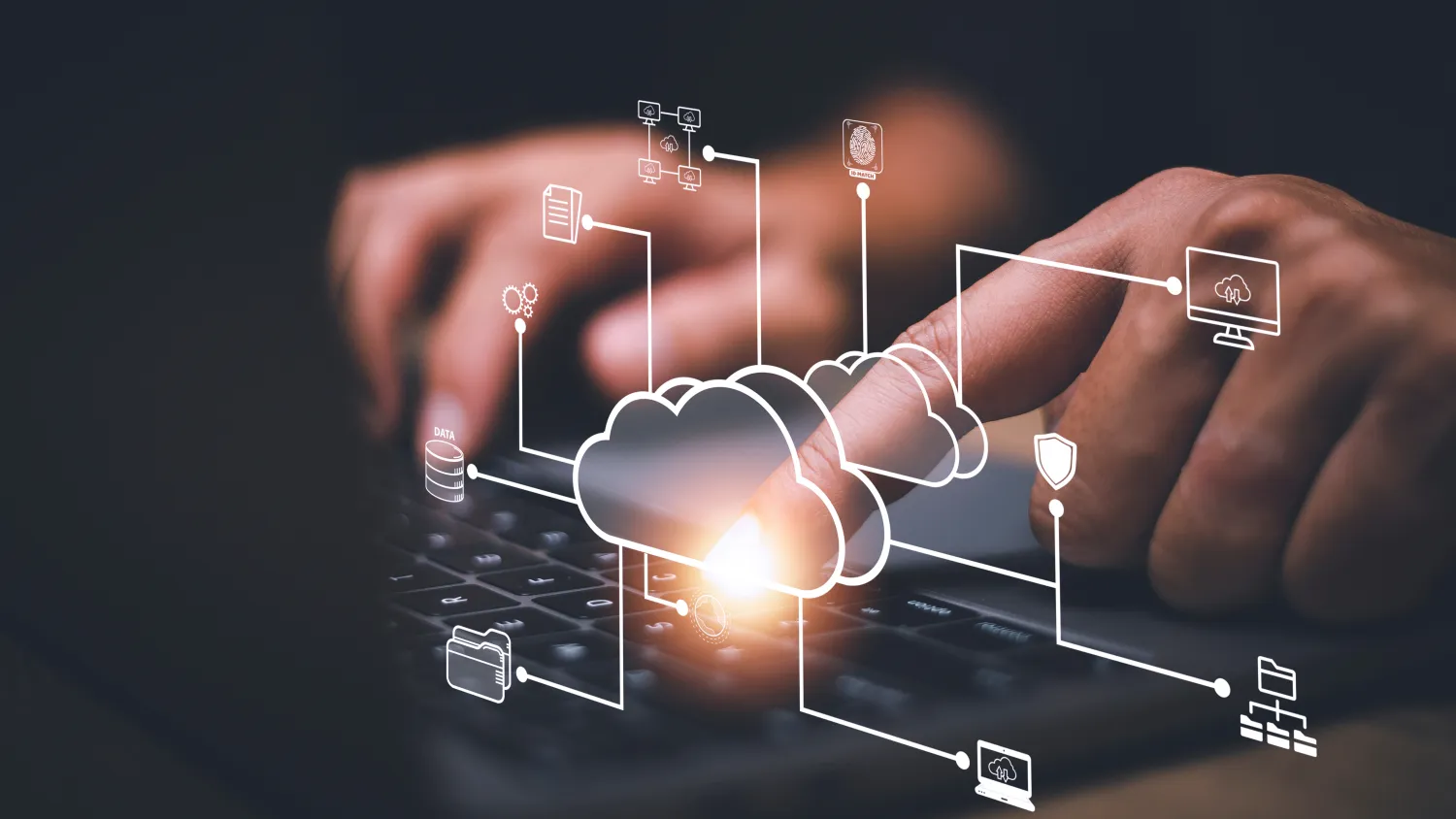OuR GUIDE
BIOS basics
The BIOS is much more than just firmware; it’s the primary guardian of your computer’s digital threshold. Intimately integrated into the motherboard, it ensures that vital operations run smoothly from the moment your machine is switched on. Beyond its role in system start-up and hardware initialization, the BIOS establishes an essential bridge between the hardware and the operating system, enabling fluid and secure communication between the two entities.
However, the BIOS is not limited to these operational functions. In fact, it also acts as a digital vault, housing a multitude of data crucial to the smooth running of your system. This data goes far beyond mere configuration parameters; it constitutes a veritable system identity card, containing information such as firmware version, motherboard model and make, as well as specific details on each key hardware component.
So, from the very first moments of power-up, the BIOS orchestrates a complex choreography between hardware and software, ensuring that each component is ready to play its part in executing the tasks ahead. And while users are often unaware of its silent existence, the BIOS remains a fundamental pillar of the reliability and security of any computer system.

BIOS data
The information housed at the heart of the BIOS is more than just an enumeration of technical data; rather, it represents the solid foundations on which the entire IT ecosystem rests. First and foremost among this valuable data is the firmware version, a crucial reference indicating the evolution and improvements made to system performance and security.
The BIOS manufacturer, such as AMI (American Megatrends Inc.), Phoenix Technologies or Insyde Software, is also listed, adding an extra dimension of traceability and firmware quality. This information can be vital in the event of technical support or problem diagnosis.
The model of the motherboard, the backbone of the computer, is a key piece of data in identifying the precise hardware used in the construction of the machine. This precise identification not only facilitates system maintenance and upgrades, but also ensures optimum compatibility with new hardware components.
As for system configuration parameters, they represent the personalized DNA of each machine, reflecting the specific choices and needs of the user or system administrator. These settings include options such as boot order, system clock settings, power management, and much more.
Finally, details of hardware components, such as CPU and RAM, provide a detailed view of the machine’s computing power and capabilities. This information is essential for optimizing system performance, identifying potential bottlenecks and planning judicious hardware upgrades.
All in all, this data is more than just numbers and technical parameters; it represents the universal language that enables hardware and software components to interact harmoniously, ensuring the smooth running and efficient management of any IT system.

Importance of safety
The information stored in the BIOS is not just static data; it is also a prime target for attackers seeking to compromise a system’s security. Indeed, vulnerabilities present in BIOS firmware can be exploited underhandedly to infiltrate a system’s defenses and take full control of it.
Attackers can exploit these security holes to install persistent malware, bypass operating system security measures or even exfiltrate sensitive data without being detected. Once an attacker has gained a foothold in the BIOS, he can operate stealthily and persistently, often evading detection by antivirus software and traditional security measures.
In the face of this persistent threat, regular BIOS updates become an absolute necessity. Hardware manufacturers regularly release firmware updates to correct discovered vulnerabilities and strengthen BIOS security. Ignoring these updates exposes a system to an increased risk of exploitation by attackers seeking to take advantage of known vulnerabilities.
However, updating the BIOS is not without risks. Incorrect execution of the update can lead to serious system malfunctions, or even render the computer unusable. Therefore, it’s crucial to follow best practices when updating the BIOS, such as backing up important data beforehand, using firmware versions from reliable sources, and taking extra precautions to avoid power interruptions or system crashes during the update process.
Ultimately, protection against BIOS threats requires a proactive approach and constant vigilance. By combining regular firmware updates with good IT hygiene and robust security practices, organizations and individuals can strengthen their resilience against attacks targeting this critical component of the IT infrastructure.

Potential risks
The information stored in the BIOS is not just static data; it is also a prime target for attackers seeking to compromise a system’s security. Indeed, vulnerabilities present in BIOS firmware can be exploited underhandedly to infiltrate a system’s defenses and take full control of it.
Attackers can exploit these security holes to install persistent malware, bypass operating system security measures or even exfiltrate sensitive data without being detected. Once an attacker has gained a foothold in the BIOS, he can operate stealthily and persistently, often evading detection by antivirus software and traditional security measures.
But the threats don’t stop there. Attackers can also exploit BIOS information to orchestrate attacks of formidable sophistication. By exploiting a BIOS vulnerability, attackers could not only take full control of the hardware, but also infect compromised devices to participate in DDoS (Distributed Denial of Service) attacks.
DDoS attacks aim to overwhelm a target with a massive volume of network traffic, resulting in resource saturation and making services unavailable to legitimate users. By exploiting compromised devices, such as computers infected with malware, attackers can aggregate their resources to launch devastating DDoS attacks against specific targets.
These attacks can have devastating consequences, ranging from the disruption of large-scale online services to significant financial losses for targeted organizations. What’s more, the increasing complexity and sophistication of DDoS attacks makes them harder than ever to detect and mitigate.
In the face of this growing threat, it is essential that organizations take proactive steps to protect their systems against BIOS-targeted attacks. This includes implementing good IT security practices, such as regularly updating BIOS firmware, continuously monitoring network activity, and raising user awareness of the security risks associated with DDoS attacks and other emerging threats.

Good safety practices
To enhance the security of IT systems, a holistic approach to BIOS security is required. This means implementing good security practices throughout the system’s lifecycle, from design to decommissioning. Here are a few essential measures to enhance BIOS security:
Regular BIOS firmware updates: Hardware manufacturers regularly release BIOS firmware updates to correct discovered vulnerabilities and improve security. It’s crucial to keep BIOS up to date by installing these updates as soon as they become available. Organizations should set up BIOS update management processes to ensure that all machines are correctly updated.
Physical protection of BIOS access: Access to the BIOS should be strictly controlled to prevent unauthorized manipulation. Organizations can use methods such as setting BIOS passwords, enabling BIOS integrity checking (Secure Boot), and disabling alternative boot ports to limit BIOS access to authorized users only.
Monitoring for suspicious activity : Continuous monitoring of BIOS activity is essential to detect attempted exploitation or compromise. Organizations can implement BIOS log monitoring solutions to detect anomalies, such as unauthorized changes to BIOS settings or unauthorized access attempts. In the event of suspicious activity, immediate action must be taken to investigate the incident and mitigate the risks.
In addition, it is important to integrate BIOS security into the organization’s overall IT security policies. This includes making users aware of the risks associated with BIOS, and training them in good security practices. By taking a proactive approach and implementing appropriate security measures, organizations can strengthen the security of their IT systems and reduce the risk of attacks targeting BIOS.


